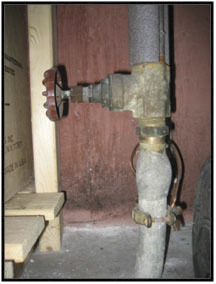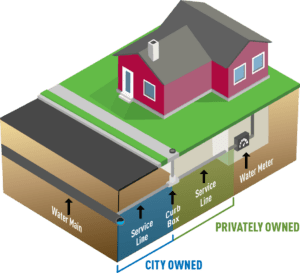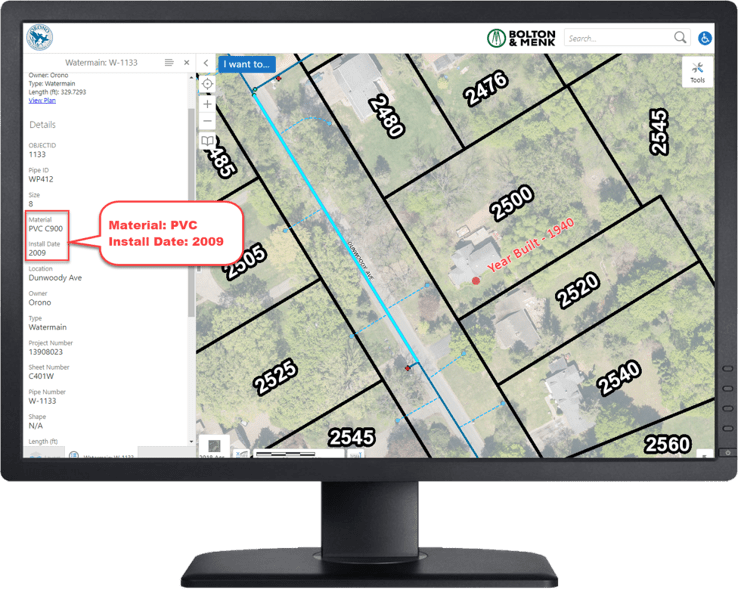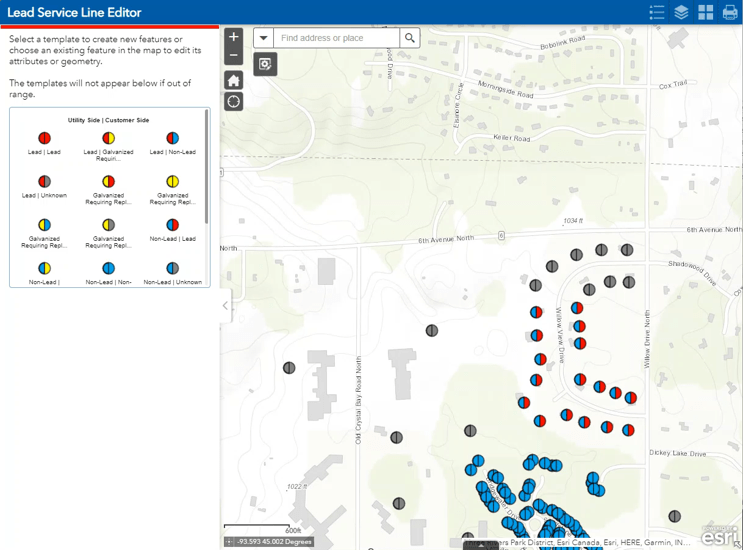Getting the Lead Out: Understanding the Lead & Copper Rule Revisions
 Lead water service lines have been grabbing the attention of many municipalities recently, with the Iowa Department of Natural Resources (DNR) announcing rule revisions to the Lead and Copper Rule (LCR) that requires all public water systems to submit water service line inventories by October 16, 2024. At this time, this deadline leaves just over a year for systems to acquire all the information necessary to meet the requirements.
Lead water service lines have been grabbing the attention of many municipalities recently, with the Iowa Department of Natural Resources (DNR) announcing rule revisions to the Lead and Copper Rule (LCR) that requires all public water systems to submit water service line inventories by October 16, 2024. At this time, this deadline leaves just over a year for systems to acquire all the information necessary to meet the requirements.
The goal of the Lead and Copper Rule Revisions (LCRR) is to locate all lead water services and develop an action plan for replacing them over time. Exposure to lead can come from a handful of different sources including paint, dust, soil, air, food, and drinking water. Lead in drinking water is most often attributed to lead service lines found between the home and the watermain in the street. Over time, corrosion breaks down the lead allowing it to enter the water distribution system. Children are particularly at risk as lead can lead to damage to the nervous system, learning disabilities, slowed growth, and anemia. Lead in drinking water cannot be seen, tasted, or smelled. The only way to determine if lead exists in drinking water is through testing and sampling.
History of the LCR
In 1986, Congress passed the Safe Drinking Water Act Lead Ban that required the use of “lead-free” pipe. “Lead-free” pipe meant no more than 8 percent lead in pipes and pipe fittings. In 1991, the LCR was established and required water suppliers to monitor for lead in drinking water and provide treatment if lead or copper levels were too high. The U.S. Environmental Protection Agency (EPA) strongly recommended schools test their facilities, however, testing for lead and copper in a school was not required unless they owned their own water system. In 2011, the 1986 Lead Ban was amended and reduced the allowable lead limits in “lead-free” pipe to 0.25 percent.
Rule Revisions
The LCRR was implemented by the EPA on January 15, 2021, requiring public water systems to complete an inventory of all water service lines by the October 16, 2024 deadline. All service lines must be classified as one of the following:
- Lead (LSL)
- Galvanized Requiring Replacement (GRR)
- Non-Lead (NL)
- Lead Status Unknown (LSU)
Galvanized iron or steel that was at any point downstream from a lead or unknown service line or lead connector are classified as ‘Galvanized Requiring Replacing’. Pipes classified as ‘Lead Status Unknown’ shall be considered lead until proven otherwise.
 These rules have a larger emphasis on schools and childcare facilities. Five, 250 milliliter samples from different taps shall be taken at schools while two, 250 milliliter samples from different taps shall be taken from childcare facilities. Twenty percent of schools and childcare facilities within a water system must be sampled every year for five years.
These rules have a larger emphasis on schools and childcare facilities. Five, 250 milliliter samples from different taps shall be taken at schools while two, 250 milliliter samples from different taps shall be taken from childcare facilities. Twenty percent of schools and childcare facilities within a water system must be sampled every year for five years.
Homes identified as having lead service lines must be sampled. One important part of the sampling procedure is using the fifth liter method. This method states four liters must be drawn out of a tap prior to sampling the fifth liter to ensure any lead found is from the service line and not internal plumbing. For samples over 15 parts per billion (ppb), the public water supplier must notify the occupants of the home within three days so corrective action can be taken immediately. Rapid implementation of corrosion control is required for service over 10 ppb lead. A lead service line replacement program must be put in place when 10 ppb is exceeded. When 10 percent of sampling results exceed 15 ppb, at least 3 percent of lead service lines are required to be fully replaced each year.
Completing an Inventory
Completing a lead service line inventory may seem overwhelming but understand there are resources available to help provide the DNR with the required information. First, it’s important to review any historical documents available. Any homes built after 1988 may be classified as not having a lead service line. Furthermore, the Iowa DNR has a Microsoft Excel template available on their website that public water supply systems may use to submit their inventories. The template asks for all required and optional service line information. Any water system serving over 50,000 people must make their inventory publicly available.

Many engineering firms are also equipped to help public water suppliers compile their lead service line inventories using Esri ArcGIS. This is a web-based application that allows users to add various attributes to a map. At a minimum, a $500 subscription must be purchased to set up an account. An account allows firms to set up a user-friendly dashboard that can be operated by its staff and/or engineering staff. Documenting lead service inventories using Esri ArcGIS is a quick and easy way of seeing where lead service lines exist on a map. It can also be shared publicly and is acceptable to submit to the Iowa DNR for compliance.

It’s important to know that funding is currently not offered for compiling lead service line inventories. However, it is assumed state and federal funding will become available for replacing lead service pipes and utilize the Drinking Water State Revolving Fund (DWSRF) funding mechanism.
The October 16, 2024 deadline will be quickly approaching, so it’s important to begin inventorying water service lines now to make sure our communities all have access to and enjoy safe drinking water.
As published in Cityscape, through the Iowa League of Cities.
 Wes Boyer, PE, is a project manager with Bolton & Menk, Inc. in Spencer, Iowa. He works with various municipalities on full street reconstruction projects, utility replacement projects, water towers, I & I reduction plans, and more. For more information about inventorying lead service lines, you can reach him at [email protected].
Wes Boyer, PE, is a project manager with Bolton & Menk, Inc. in Spencer, Iowa. He works with various municipalities on full street reconstruction projects, utility replacement projects, water towers, I & I reduction plans, and more. For more information about inventorying lead service lines, you can reach him at [email protected].
